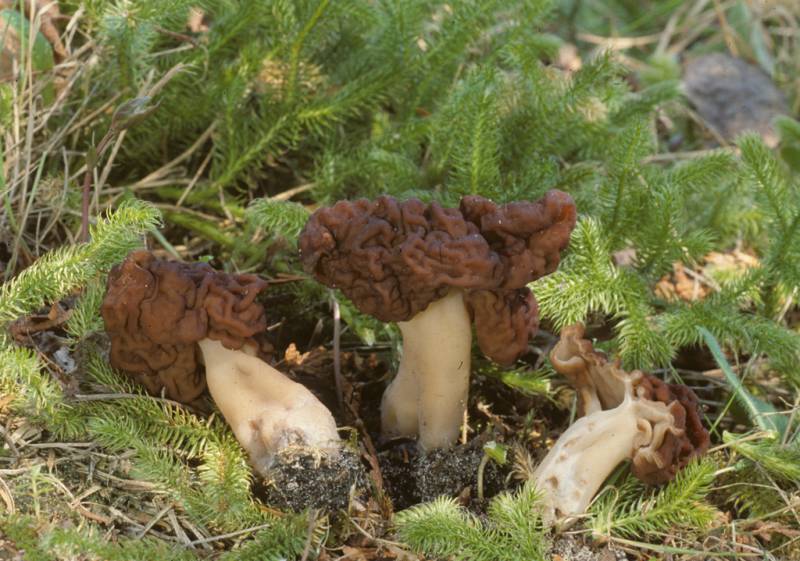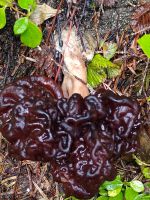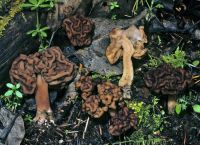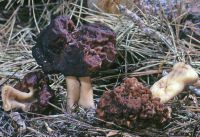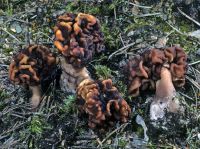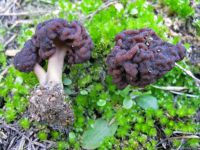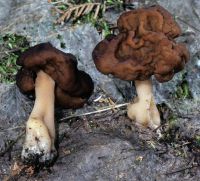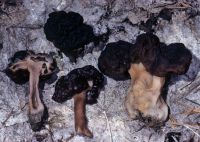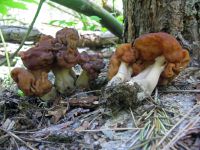Conservation Status: Not of concern
Edibility: The species name “esculenta” (Latin for edible) is misleading since it can be poisonous and has caused serious illness and deaths (see Appendix 1). G. infula and G. ambigua (P. Karsten) Harmaja, also poisonous, are similar species that occur in late summer and fall.
The species name “esculenta” (Latin for edible) is misleading since it can be poisonous and has caused serious illness and deaths (see Appendix 1). G. infula and G. ambigua (P. Karsten) Harmaja, also poisonous, are similar species that occur in late summer and fall.
Gyromitra esculenta produces caps that are irregular to slightly lobed or saddle-shaped, with a brain-like wrinkled surface that varies from dull red to rusty red, reddish brown or darker brown, sometimes with yellow or orange tints. The stipe is hollow at maturity and tinted with cap colors but often also with pinkish or grayish purple tones near the base. The edge of the cap often is curved toward the stipe or fused with it. G. esculenta is a spring or early summer species. It is associated with conifers and hardwoods and may be found on soil or rotten wood. It can be very common and is frequently encountered by morel-hunters.
PNW Herbaria: Specimen records of Gyromitra esculenta in the Consortium of Pacific Northwest Herbaria database.
CalPhotos: Gyromitra esculenta photos.

